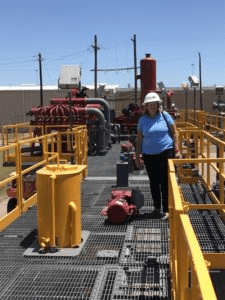Houston Industrial Accident Attorneys
No matter what industry you are in, our industrial accident lawyers are here to fight for your rights when you are injured. An estimated 845,000 Texans work in industrial plants varying from automotive to manufacturing to oil and gas industries. Regardless of the field, working in an industrial plant is dangerous work. If you or a loved one are injured in an industrial accident, you need an industrial accident attorney who will take the steps necessary to protect you and your loved ones’ interests. Call Simmons and Fletcher, P.C. for a free consultation today. You can reach us at (713) 932-0777.
Causes of Industrial Accidents

Even though there are volumes of Occupational Health and Safety Administration (OSHA) regulations that govern industrial plants and refineries, the news is regularly reporting industrial plant accidents and refinery explosions. The truth is, many of the oil and gas refineries located in and around the Houston area have been around since before the federal laws were shored up to deal with dangerous industrial plants. Furthermore, poor regulation and oversight allowed facilities to remain in a state of disrepair. Some of the most common causes we see of industrial plant injuries include:
- Failure to conduct regular safety inspections to maintain the equipment
- Failure to properly train employees
- Negligent hiring of employees
- Fall protection negligence
- Failure to provide/require proper safety goggles and/or welding masks
- Warehouse elevator accidents
At Simmons and Fletcher, P.C., you get an industrial accident lawyer in Houston, Texas who will thoroughly investigate the cause of the accident. We take getting to the bottom of the accident seriously and we understand how to use the extensive OSHA rules and regulations to your advantage.
Experience Counts
Simmons and Fletcher, P.C. have significant experience in representing injured workers and others from all walks of life and from all positions of employment, who have ended up suffering from an industrial accident. But make no mistake, we don’t defend negligent employers. Our clients are the backbone of the workforce–the employees, laborers, contractors, and even managers who fall victim to the company’s refusal to adhere to the strict safety guidelines of OSHA. Our clients are also the residents who live in the area and whose lives have been turned upside-down by a toxic release or a nearby plant explosion. When the company cuts corners or plays fast and loose with safety rule enforcement, we help the victims recover. Indeed, with a combined professional experience of over 100 years practicing law the attorneys at Simmons and Fletcher, P.C. are well prepared to provide you with comprehensive legal representation in these types of cases as well.
Common Types of Industrial Accidents

Industrial accidents come in many forms, but they all have one thing in common: they can cause widespread, permanent injuries to the workers and residents of the surrounding area. These types of accidents include:
- Oil and Gas Refinery Accidents and Explosions
- Toxic Chemical or Gas Exposure
- AFFF Firefighter Foam Exposure
Regardless of the type of industrial accident, we are here to help. Call us now.
Common Injuries from Industrial Accidents
In the past 40 years, Simmons and Fletcher, P.C., has helped thousands of people recover from injuries of all kinds. We have experience dealing with the following types of injuries commonly seen in industrial accidents:
- spinal cord injuries
- burn injuries
- electrocution injury
- scars
- loss of limbs
- traumatic brain injury and concussion
- broken bones
- wrongful death
- retinal damage and/or loss of eyesight
If you have been injured due to an industrial accident, you need attorneys who have the knowledge and experience to fight for your rights. Call Simmons and Fletcher, P.C. for a free consultation today.
Speak to an Attorney Today
Our industrial accident lawyers have significant experience in representing people from all walks of life and from all positions of employment. But make no mistake, we don’t defend negligent employers. Our clients are the backbone of the workforce–the employees, laborers, contractors, and even managers who fall victim to the company’s refusal to adhere to the strict safety guidelines of OSHA. Our clients are also the residents who live in the area and whose lives have been turned upside-down by a toxic release or a nearby plant explosion. When the company cuts corners or plays fast and loose with safety rule enforcement, we help the victims recover. Indeed, with a combined professional experience of over 100 years practicing law the attorneys at Simmons and Fletcher, P.C. are well prepared to provide you with comprehensive legal representation in these types of cases.


